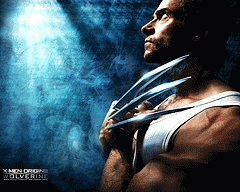Every so often, Hollywood produces a film about racial issues that is so honest, so truthful, so powerful that I wish every person could see it. Do The Right Thing (1989) is one such film. Crash (2005) is another. It's not that these are perfect films, just that they know how to deal with the racial themes they take on. Unfortunately, these films are the exception rather than the rule. Below I use a few recent popular films to describe five common mistakes writers and filmmakers make in representing racial dynamics.
- The racist personality. By far the most common implied explanation for racism in film is some sort of personality flaw. In this way, "racist" is often just a synonym for "evil". In the Harry Potter franchise, for example, it is only the Slytherin House that seems to produce Death Eaters (the Potter universe's version of the Nazis). Since students are magically "sorted" into the Houses based on their personality and preferences, the implication is that racism is a personality trait. In reality, that's really not how it works. First of all, racism is a learned response, which means that it can also be unlearned. In addition, like any other form of behavior, the expression of racism is strongly influenced by a variety of social and contextual factors. As a result, the same people often behave very differently depending of the context. This is one of the many things Crash got right.
Is prejudice against mutants comparable to real-world prejudice against racial minority groups? Perhaps...if the racial minority groups had superpowers.
- Inappropriate metaphors. According to long-time X-men writer Chris Claremont, "The X-men are hated, feared and despised collectively by humanity for no other reason than that they are mutants. So what we have here, intended or not, is a book that is about racism, bigotry and prejudice ." Sure, except that the mutants have all sorts of superior powers and abilities that regular humans do not. Blacks and other historically targeted racial groups? Not so much. In the X-universe, the hate and fear is at least partly rational, since the mutants really are superior and, as such, pose a legitimate threat. What exactly is it that we should apply to real-world race relations?
- The magic negro phenomenon. Washington Post film critic Rita Kempley defined magic negro characters as characters who are "likable, valuable or redemptive, but...are without interior lives." Their only purpose, it seems, is to rescue the featured white character. Time columnist Christopher Farley argues that because of writers' fundamental ignorance of African American life and culture, Black characters get magical powers instead of life histories and love interests. Among the many recent examples cited by critics are John Coffey in The Green Mile, Bagger Vance in The Legend of Bagger Vance, and Morgan Freeman's God in Bruce Almighty and Evan Almighty.
- Token characters. One of the most well documented findings in research on group relations is that people tend to see out-groups (groups that they are not part of) as being more similar than they really are. Token racial characters, that is, characters who are the only members of their racial group in the film, add fuel to this cognitive distortion, even if the characters does not conform to common group stereotypes. This is especially problematic when the character also has no meaningful role in the story, such as Harry Potter's Angelina Johnson and Dean Thomas. In such cases, one begins to wonder if the characters are only there to give the appearance of racial tolerance and diversity.
Harry, Ron, and Hermione never think about race in the conventional sense, or do they?
- A color blind world. Race relations is clearly among the most prominent and important themes in the Harry Potter books and films, with wizards, muggles, and goblins representing symbolic racial categories. It's curious, then, that despite a muggle (human) world that is exactly as our own save the presence of a parallel magical universe, race, as we know it, has absolutely no meaning. Not only does no one notice it, as far as we know, no one ever even thinks about it. In the Harry Potter universe, everyone is not just racially color-blind; they're color-unconscious. This is likely J.K. Rowling's attempt at depicting a racial utopia, but it rings hollow, especially when ethnic elements, such as Irish traditions, are carefully represented. It's great that Johnson, Thomas, Parvati Patil, and Cho Chang are all at Hogwarts, but it'd be even better if fans could also have a window into their inner world. What's it like to be non-White in Hogwarts? Rowling would have us believe that it is no different than being White, but what does she know about it? We want to hear about it directly from the characters, which means they simply have to talk about, or, at the very least, give it some thought.







